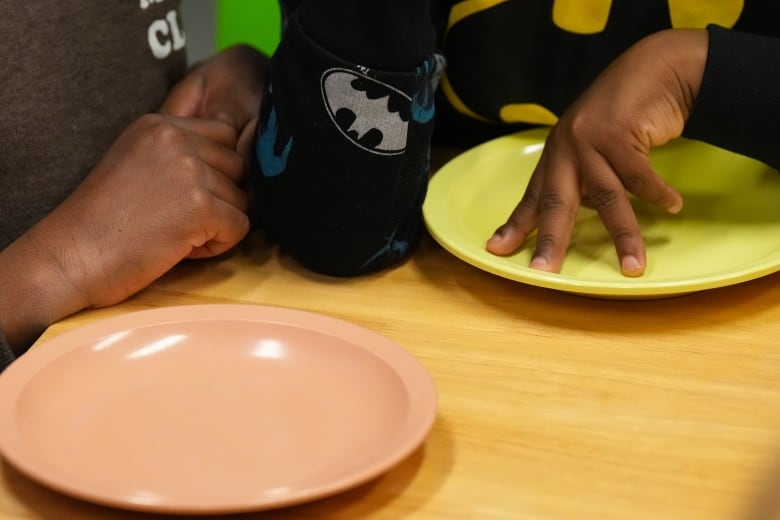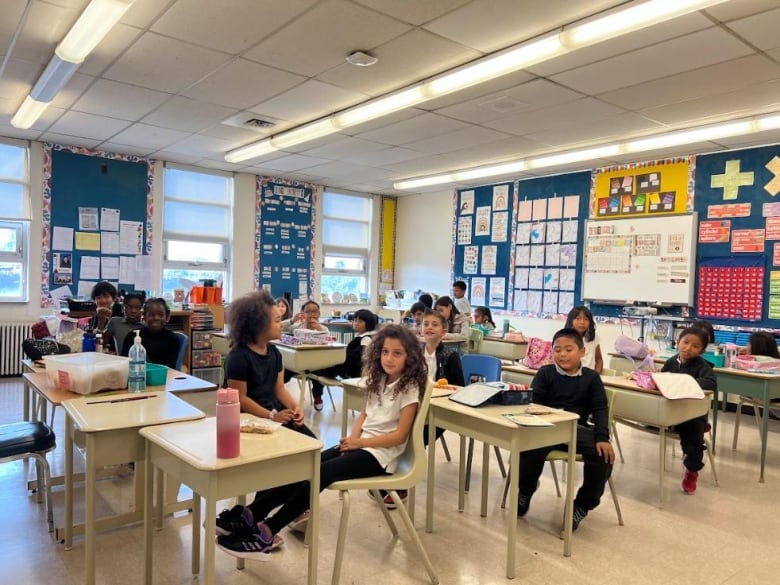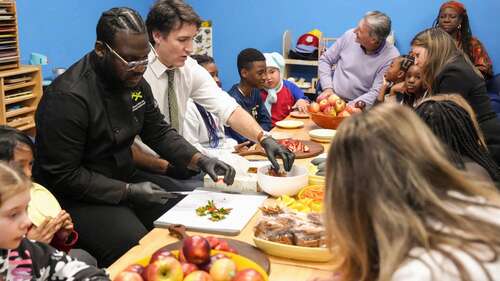The federal government’s plans to launch a national school food program might have left some people with more questions than answers about how it will actually work.
Prime Minister Justin Trudeau says he hopes the program will deliver meals to 400,000 children per year by the 2024-25 school year.
“We all want kids to have the best start in life, including the most vulnerable,” Trudeau said, announcing the program on Monday.
However, not many details were released. Officials at the Prime Minister’s Office would not comment on the record. More details may be revealed in the federal budget, planned for April 16.
In the meantime, here’s what we know — and don’t — about the $1-billion program.
Prime Minister Justin Trudeau announced a commitment of $1 billion over five years for school meals across Canada, raising hopes of parents dealing with high food costs and advocates who’ve spent years lobbying for the program.
Who is it for?
The federal government says in a statement its target is to provide meals to 400,000 kids every year, “beyond those served by existing school food programs.”
Debbie Field, co-ordinator for the Coalition for Healthy School Food, says about two million children are already participating in school food programs.
The other 400,000 are at the 1,000 schools that are on waiting lists for such programs, Field told CBC News.
A national program would also help families in need overcome the stigma of taking part in programs that only target low-income students, says Rachel Engler-Stringer, a community health and epidemiology professor at the University of Saskatchewan.
“There are plenty of kids who are not participating who could be participating,” Engler-Stringer told CBC’s Saskatoon Morning. “There are plenty of families that won’t participate because there’s a stigma involved.”
Is it a new program?
Not exactly. Don’t expect every child in Canada to suddenly get served a hot lunch. The program will support existing provincial and territorial programs.
Field says there’s a good chance Ottawa will transfer the new money into those jurisdictions, so that “it’s not a new bureaucracy, it just flows directly.”

“What we’re hoping we’ll see in the budget is the details on how that will happen,” Field said.
She wants to see Ottawa share the cost of feeding schoolchildren like it does with the $10 a day child-care funding.
Programs look different in different schools, regions and provinces. It depends on need. Some programs offer a mid-morning snack or a breakfast, lunch or “grab and go” bins. Some are free, others are pay-what-you-can.
Prince Edward Island’s Bon Appetit program offers all students from kindergarten to Grade 12 a daily lunch option (like mini pancakes and yogurt, or a ham and cheese snack box) using a pay-what-you-can model. The meals are $5.75 each for those who can afford the full price.
B.C. provides a website to help schools develop programs that fit the needs of their students.
Field says parents will likely see the effects of the federal program school by school — so, if you’re in a community with a school that has a program already, your kid will be more likely to access that food, and probably better food.
If your school doesn’t have a program, “this will allow provinces and territories to have a little bit more money so they can expand,” she said.
NDP Leader Jagmeet Singh says he will ‘put pressure on the government’ to fund school lunches for kids across the country.
How good are the existing programs?
It varies. Programs exist in most provinces and territories — which have jurisdiction over education — but “highly unevenly,” according to York University’s Food Policy for Canada website.
“Many needs go unaddressed … participation rates are highly variable,” it says.
Researchers at the University of Toronto echoed that sentiment in a 2021 report, saying the thousands of programs “vary greatly in design.”
They are delivered by charities, school boards, governments, churches and corporations.
Only about 65 per cent of Toronto-area children participated in the school food programs available there, according to 2023 data compiled by the University of Toronto from local surveys and focus groups with parents and caregivers.
Barriers to accessing those programs included a lack of culturally appropriate food, program reductions including less food and less availability. The research also found some schools lacked kitchens and volunteers.

Several provinces and territories have recently increased their budgets for student food programs.
This includes a recent Ontario pledge for an additional $5 million (bringing its 2023 total to $38 million), a Quebec pledge for $34 million over five years, and a B.C. pledge for $214 million over three years, just to name a few.
In late February, Nova Scotia announced it was investing $18.8 million for new lunch program for students in the public school system.
“The current school food program landscape is complex,” Katerina Maximova, an associate professor of epidemiology at the Dalla Lana School of Public Health at University of Toronto, said via email.
“There are different mandates, different types of programs, multiple and overlapping sources of funding, and limited program co-ordination, monitoring and evaluation. This makes it difficult to monitor and to ensure consistency of standards.”
How will Canada’s program work?
A 2023 stakeholder report on building a national program, compiled by Employment and Social Development Canada (ESDC), may provide some hints.
Respondents said they supported a “universal program delivery model” in which every child has access to school food in order to reduce stigma.
“Though programs often target low-income households, there is no ‘stereotypical’ hungry child,” the report noted.
The participants also supported aligning any policy with Canada’s Food Guide.
Other reports have mirrored these findings. For instance, the University of Guelph’s Arrell Food Institute wrote last year that, ideally, a national program would provide universal access to nutritious food for students from junior kindergarten through Grade 12.
“What we know from best-practices is that it’s all children who need to eat at school, not just children from a low-income household,” Field said.
While it could be that, initially, the funding is allocated more in low-income neighbourhoods, it should still be be universal within those schools, Engler-Stringer said.
“We could start there and then build,” she said.
Why do we need it?
Nearly one in four children in Canada don’t get enough food, the government says, and more that one-third of food bank users are children, according to Food Banks Canada. And there’s been a 29 per cent increase in food insecurity in children in the last year, according to the charity Children First Canada.
Canada is also the only G7 country that doesn’t have a national school food program or national standards, according to the Breakfast Club of Canada. Advocates have argued that a national program is needed to fill gaps left by the patchwork of provincial, local and charitable programs that are under strain due to low resources and high food prices.
And full stomachs help learning. Evidence shows that hunger affects focus and concentration, Engler-Stringer says.
“It is one of those tools that we have to help children fully participate in the classroom and be able to be the best student that they can be.”




